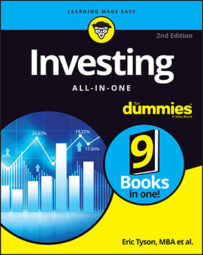- New and better bond funds: According to Morningstar, you have almost 2,300 bond funds in which to invest. (If you were include various “classes” of these funds, such as many mutual-fund companies offer, basically for small investors and large investors, the number would be about 10,000.) Of these, at least 300 are bond index funds — funds that seek to capture the returns of an entire swatch of the bond market — which, from our vantage point, tend to be the best options for most bond investors. These funds carry an average yearly expense ratio of 28 basis points (28⁄100 of 1 percent), which is way, way less than most bond funds (the overall average of just about 1 percent).
The newest kid on the block, exchange-traded funds (ETFs) — funds similar to mutual funds — are the greatest thing to happen to bond investing in a very long time. ETFs, the vast majority of which are index funds, allow small investors to invest like the Big Boys, with extremely low expenses and no minimum investment requirements. As of this printing, approximately 260 bond ETFs exist. Some of them, such as several offerings from Vanguard and Schwab, carry annual expense ratios of less than 1⁄10 of one percent.
- Greater access to information: One of the advantages of all index funds, but especially exchange-traded funds over traditional actively managed mutual funds, is their relative transparency. That means that when you invest in an ETF, you know exactly what you’re buying. Traditional mutual funds are not required to reveal their specific investments; you may think you’re buying one thing and end up with another.
When it comes to buying and selling individual bonds, it’s as if a muddy pond has been transformed into a glass aquarium. Not long ago, a bond broker would give you a price for a bond, and you’d have absolutely no idea how fair a deal you were getting. Nowadays, you can search online and usually get a very good idea of how fair a deal you’re getting, how much the broker is making, and whether better deals can be had.
- The expansion of Uncle Sam’s treasury chest: If you are going to invest in individual bonds, U.S. Treasury bonds may make the most sense. At the Treasury website, you can buy its bonds directly and not have to deal with any brokers whatsoever, nor will you need to fork over any kind of markup.
One special kind of Treasury bond — Treasury Inflation-Protected Securities, or TIPS — has been in existence since the mid-1990s. It is a very exciting development in the world of bonds. TIPS offer only very modest interest rates, but the principal is readjusted twice annually to keep up with inflation. TIPS represent an entirely new asset class (kind of investment), and coauthor Russell advocates that most of his clients hold at least one-quarter of their bond allocation in TIPS. They can be important portfolio diversifiers.
- Internationalization of the bond market: The U.S. government isn’t the only government to issue bonds. U.S. corporations aren’t the only corporations to issue bonds, either. For added portfolio diversification, and possibly a higher yield, you may want to look abroad. Until recently, international diversification in fixed income was very difficult. Now, it’s as easy as (but not as American as) apple pie.
As with U.S. bonds, you have your pick of short-term or long-term bonds, safe-and-simple or risky-with-high-return potential. You can invest in the relatively calm waters of Canada, Japan, or Germany. Or you can travel to countries such as Russia and Brazil where the bond markets are choppy and exciting.

